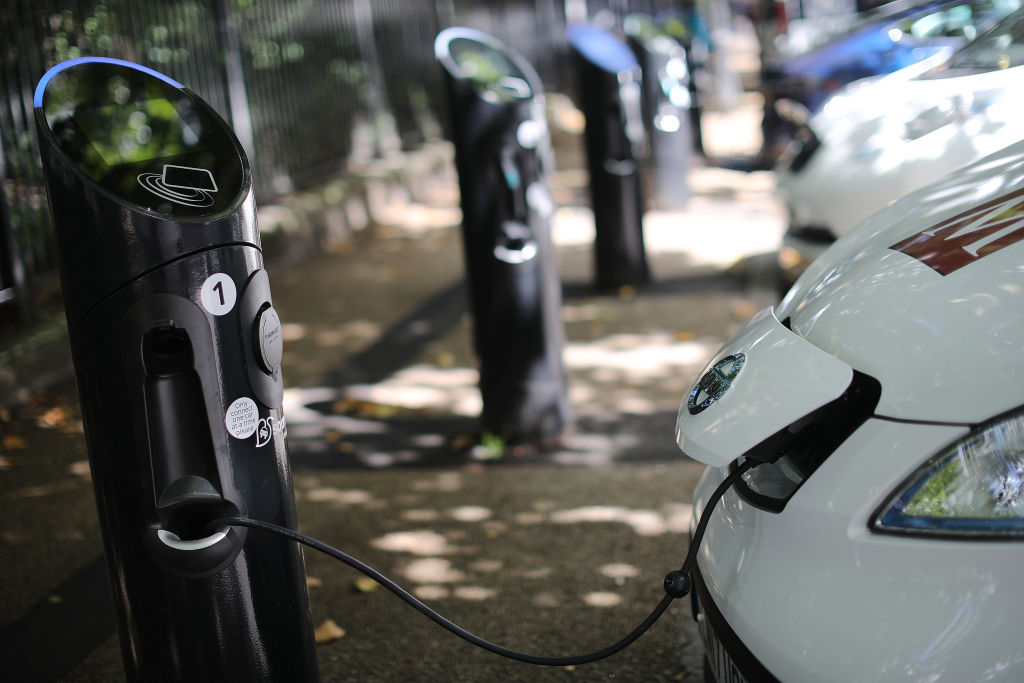
We’re going to need to mine a huge amount of metals like cobalt and lithium to electrify the world’s automobiles. But things would be easier if car batteries didn’t have to be so big.
To a large extent, automobile makers building the next generation of electric vehicles (EVs) are competing on range, putting big, powerful batteries into their cars so they can travel farther between charges. That means mining and refining more minerals to build those bigger cars, and thus a bigger impact on the landscape, and a larger environmental footprint. The reason for all that is that EV batteries don’t charge very fast, so the assumption is that people will only buy cars that they can drive for a long time without the inconvenience of a long charging stop. But that paradigm might be about to change.
A typical EV takes around 30 minutes or more to charge with a high-powered DC fast charger. But today researchers at Penn State University published a study in Nature revealing they have developed an EV battery that, crucially, can charge up to about 70% capacity in roughly 10 minutes. The technology can work for any size of battery, but perhaps the biggest benefit is that it will enable automakers to sell EVs with smaller batteries without triggering consumers’ range anxiety. The faster a battery can charge, the less need there is for big battery packs with long range, since stopping to charge will be no less an inconvenience than going to a gas station. And smaller battery packs also mean cheaper EVs.
Read more: JB Straubel Has a Fix for the Battery Problem
“Now you can essentially use much less raw materials, and reduce a tremendous [amount of] carbon emissions from manufacturing those batteries,” says Chao-Yang Wang, a professor of materials science and engineering at Penn State, and the lead author of the study. He’s also the founder and CTO of EC Power, a battery technology company that collaborated with the researchers on the study. The company is building a factory in Pennsylvania to start mass producing the batteries—they say the technology will be commercially available in about two years.
Wang is something of a rarity in the world of battery engineering—he’s been in the field since the early 1990s, contributing work on GM’s groundbreaking EV1, and his papers stretching back through the decades have been referenced by hundreds of other studies. About seven years ago, Wang and his team started looking into the question of how to make batteries charge faster. They tried several approaches, including methods to modulate the electrical current feeding energy into the battery, but ultimately cast that option aside.
More from TIME
One other potential method involved heat. Batteries use chemical reactions to store energy, and those reactions are susceptible to temperature. When it gets cold, those reactions slow down, which is one of the reasons EV range can suffer in cold weather. Wang and his team started looking into doing the opposite, seeing if by warming essential components to the right temperature (about 176°F in their latest models) they could stimulate those reactions to work faster. As it turned out, the approach worked better than they could have expected. “The modeling came back to be just astonishing,” says Wang.
Read more: How Electric Cars Could Craft the Soundscape of the Future
It took about a year and a half to finish completing electrochemical and thermal simulations for the heat approach—for instance, to see if heating the battery components would make them wear out faster. By 2017, they were building test models. Their approach involved burying thin sheets of nickel foil inside a battery, which could heat the internal components to just the right temperature during charging, helping them to absorb electricity more efficiently—without, of course, overheating the battery and creating a fire risk. “Battery technology has been lagging behind, and its fast charging problem has been a longstanding challenge,” Wang says. “Only now, we’re beginning to crack the code.”
More Must-Reads From TIME
- The 100 Most Influential People of 2024
- The Revolution of Yulia Navalnaya
- 6 Compliments That Land Every Time
- What's the Deal With the Bitcoin Halving?
- If You're Dating Right Now , You're Brave: Column
- The AI That Could Heal a Divided Internet
- Fallout Is a Brilliant Model for the Future of Video Game Adaptations
- Want Weekly Recs on What to Watch, Read, and More? Sign Up for Worth Your Time
Write to Alejandro de la Garza at alejandro.delagarza@time.com